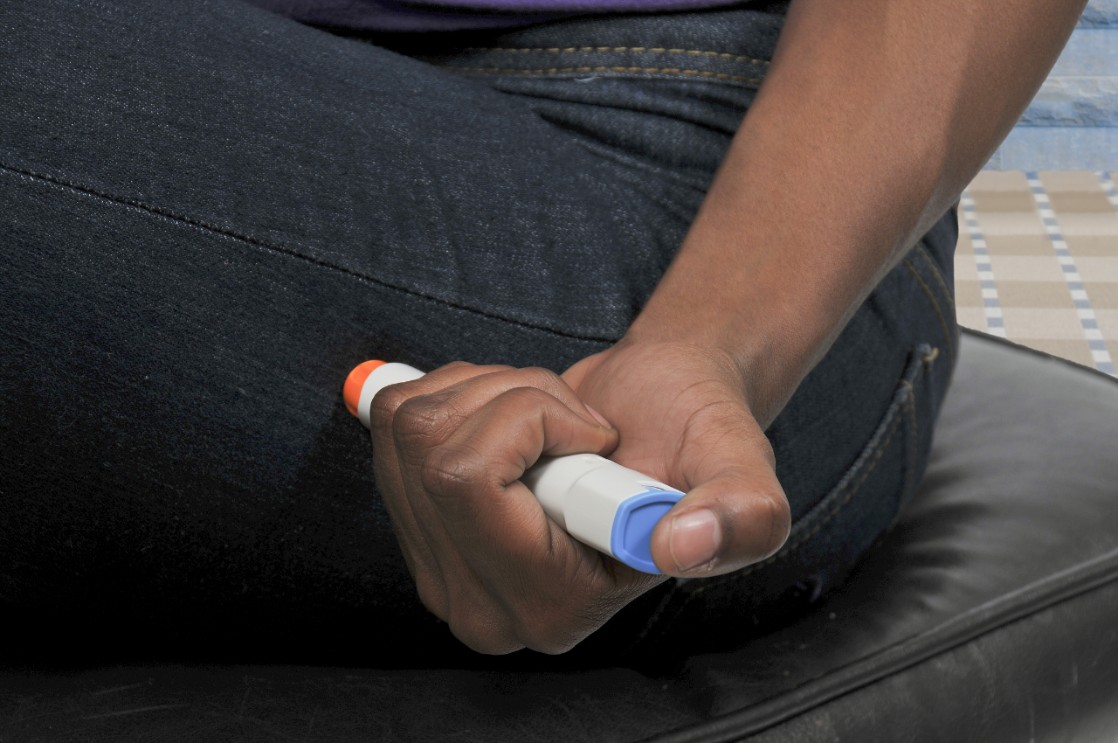Did you know about 32 million people in the U.S. have a food allergy? If you have allergies or know someone who does, then you’re probably familiar with the symptoms of an allergic reaction: difficulty breathing, swollen mouth, etc. But do you know what causes these symptoms?
Understanding the science behind an allergic reaction
Introducing the allergen
For an allergic reaction to occur, a person must first come into contact with something they are allergic to. This can occur through touching an item, swallowing food, getting stung or bitten by a bug, or a number of other events.
Recognizing the invader
If your immune system notices a protein from one of these events that it thinks is an invader, it will respond by creating immunoglobulin E (IgE) antibodies. These antibodies will then attach to mast cells, which are part of the immune system. When these two things bind together, the mast cells release histamine and other chemicals.
Reacting to the immune system’s chemical response
Histamine is a chemical your body naturally creates. In normal amounts, it helps your body perform everyday functions, like releasing stomach acid. However, high amounts like those caused by an allergic reaction, when combined with other chemicals released by the immune system, can cause a few unwanted side effects, including:
- Expanding blood vessels. While this would normally help white blood cells reach foreign invaders more efficiently, this rapid expansion can cause a person’s blood pressure to drop quickly, resulting in dizziness, lightheadedness, and even unconsciousness.
- Increased heart rate. A person’s heart rate may increase in response to the foreign invader. When this is combined with the expanded blood vessels, this can also contribute to lower blood pressure.
- Leaky blood vessels. In addition to making the blood vessels expand, the histamine can cause the walls to become permeable, which would allow the white blood cells to travel through the walls to reach injured tissues. This explains how the symptoms of anaphylaxis can spread so quickly throughout the body.
- Muscle contraction. The histamines cause the muscles in the lungs, throat, and other organs to constrict. This can cause the throat to narrow and make it harder to breathe.
- Swelling. The body can react to histamine by swelling, which can cause the throat, tongue, and mouth to swell and make it extremely difficult to breathe.
What to do during an allergic reaction
Now that you know what happens in the body during an allergic reaction, it’s time to learn how to handle one if you notice it happening.
First, it’s important to be able to identify an allergic reaction. Common symptoms of anaphylaxis include:
- Abdominal pain or vomiting
- Anxiety
- Closing airways or tightness in the throat
- Difficulty breathing
- Difficulty speaking or hoarseness in the voice
- Dizziness
- Loss of consciousness
- Rapid heartbeat
- Swollen throat, tongue, or lips
- Unresponsiveness
If you notice these symptoms, it is essential to call 911 immediately. The next step is to check and see if the person has an epinephrine auto-injector. These pen-like tools allow people to quickly receive a dose of epinephrine (adrenaline), which can help alleviate symptoms.
If you need to assist someone with this, take the pen out of the carrying tube, hold the orange tip toward the thigh, pull up the blue tab, and inject it directly into the middle of the outer thigh. (This can be done through clothing.) It will make a clicking noise when the injection begins, and you should hold it in place for at least three seconds. Rub the area for a few seconds to help the infusion get moving.
Medical attention is still necessary afterward, so be sure to continue with emergency medical care.
Preventing allergic reactions
If you or a loved one experiences symptoms of a mild allergic reaction, schedule an appointment with a Baylor St. Luke’s Medical Group primary care physician. They can offer tips for avoiding allergens and refer you to a specialist if they think further care is necessary.
If you notice an allergic reaction, please don’t hesitate to seek immediate medical care. The teams at our St. Luke’s Health emergency locations are here to help when minutes matter.





